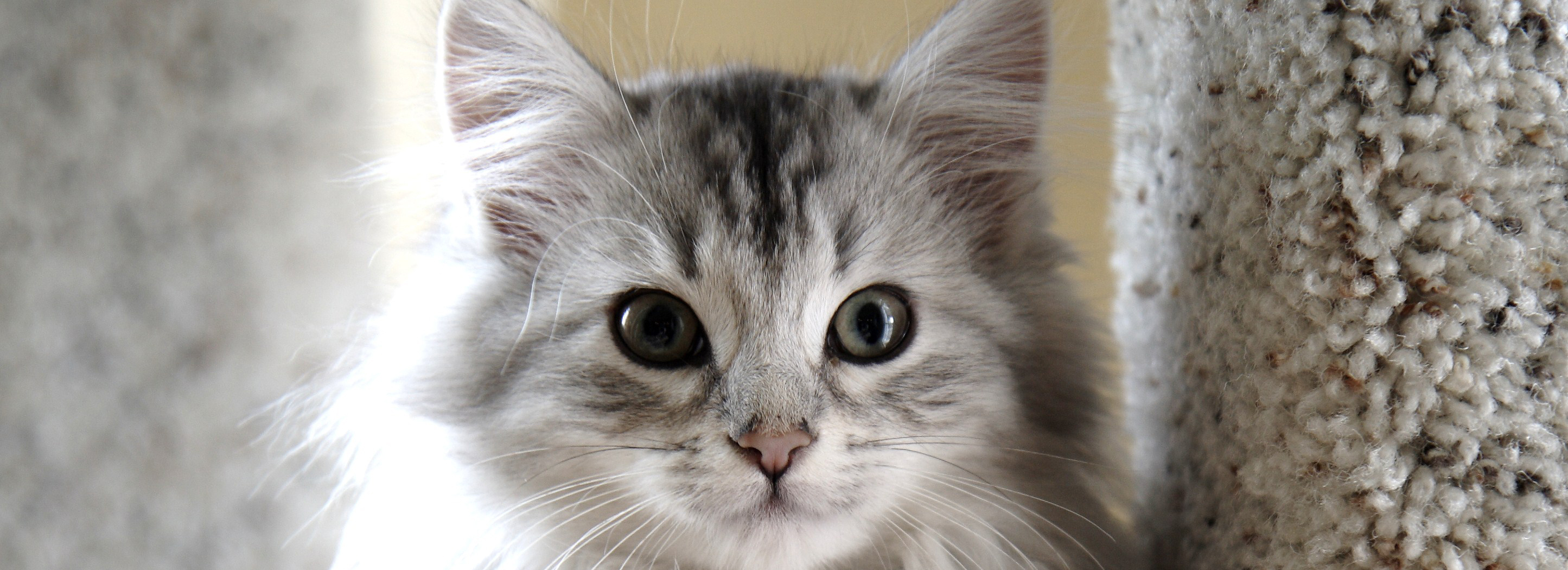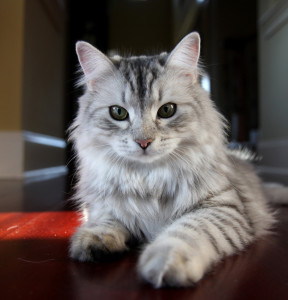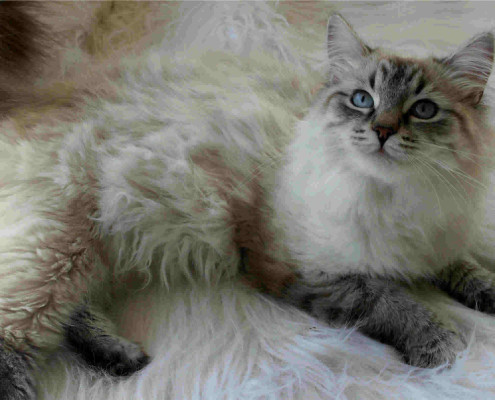Siberian

Meoww!!
The Siberian is medium to medium-large breed with a plush, medium length coat. The head of the Siberian is a modified wedge of medium size with rounded contours broader at the skull and narrowing slightly to a full rounded muzzle with well rounded chin.
In 5 Words
- Loyal
- Outgoing
- Playful
- Affectionate
- Sociable
Snapshot
Size: medium to large
Weight: 17-26 lbs
Origin: Russia
Life Span: 12-15 years
Colour: varied

Characteristics
Learn About the Siberian
The exact origin of the Siberian Cat is impossible to confirm due to lack of documentation. It’s a Russian house cat breed. Just, like any stray cat, if given some food and a warm place to stay, it will gradually become more or less domesticated. Cats are good rodent hunters and were therefore imported to cities like Leningrad ( St. Petersburg) to keep the rats under control sometimes at the end of the 1940’s or the beginning of the 1950’s. The breed’s full name is the Siberian forest cat and is closely related to the Norwegian forest cat.
First mention of the Siberian took place in 1889 in “Our Cats and All About Them,” by Harrison Wier, the “father of the cat fancy.” The breed had appeared in one of the earliest cats shows in England during 1871 and became a fan favorite, albeit a hard breed to come by. It wasn’t until 1987 when the Siberian was registered in the St. Petersburg Kotofei cat club. The catteries in Russia had limited foundation stock and the number of Siberians that had been exported to Poland, Germany and Scandinavia was limited during the 1980s and early 90s. . The breed was accepted for registration by the Cat Fanciers’ Association (CFA) in 2000 and was granted full championship status in 2006. However, Siberians are still extremely rare in this country.
The Siberian is medium to medium-large breed with a plush, medium length coat. The head of the Siberian is a modified wedge of medium size with rounded contours broader at the skull and narrowing slightly to a full rounded muzzle with well rounded chin. The cheek bones are neither high set or prominent there should be a good distance between the ears and the eyes. The forehead being flat and the nose has a slight curvature before the tip the neck is medium in length and round and well muscled.
The tail of the Siberian is medium in length wide at the base with a blunt tip and the end which is evenly and thickly covered with fur from the base of the tail to the tip of the tail.The ears are medium to large wide and set as much on the sides of the head as on the top the tips are rounded and the ear tilts forward.The eyes are large almost round eyes set wide apart with the outer corner slightly angled toward the base of the ear. There is no relationship of eye colour to coat colour however the typical colour seen is yellow- green.
Siberian cats make loving and wonderful house pets. They love human companionship. Siberians can be very dog-like in terms of their temperament. They are loyal and enjoy playing games of fetch. They get along well with other house pets. Siberian cats are calm and gentle creatures. They have soft voices and rarely meow unless they have a request. They like to be near their owners and to spend time with them. Siberians are considered to be quite intelligent and good problem-solvers.
They are loyal, outgoing, playful, affectionate and sociable, making the breed a good choice for those who think that they are so-called “dog people” rather than “cat people.” Many a devout dog-lover has succumbed to the zany, charming ways of the Siberian cat. The Siberian is something of a madcap adventurer, climbing to great heights and leaping wide expanses as he makes his way through his home. This is the cat you will find finagling his way past a closed door or swinging from the chandelier in an attempt to get to the feather toy or laser pointer that you so carefully put out of reach. They like to spend more time outdoors and are quite independent. Does not require much attention, being fairly quiet and discreet.
Both pedigreed cats and mixed-breed cats have varying incidences of health problems that may be genetic in nature. Siberians are generally healthy, but one problem that has been seen in the breed is hypertrophic cardiomyopathy.
Hypertrophic cardiomyopathy is a form of heart disease that causes the heart muscle to enlarge. It is found in pedigreed and non-pedigreed cats. Siberians are one of the breeds that may be affected by this disease.
Siberian cats are easy to care for. They have water resistant coats that do not become soiled easily. However, Siberian coats do have seasonal shedding. In the summer, Siberian fur sheds much more rapidly. Increase brushing and combing to twice a week during the warm weather months. Siberians can get knots and tangles in their fur if it is not groomed.
Bathing may be needed if the cat’s coat is excessively soiled. Be sure to gently remove all of the soap in the cat’s fur. Siberian cat fur can readily hold onto excess soap and buildup. Dry your Siberian’s fur thoroughly with a dryer on the low setting.






